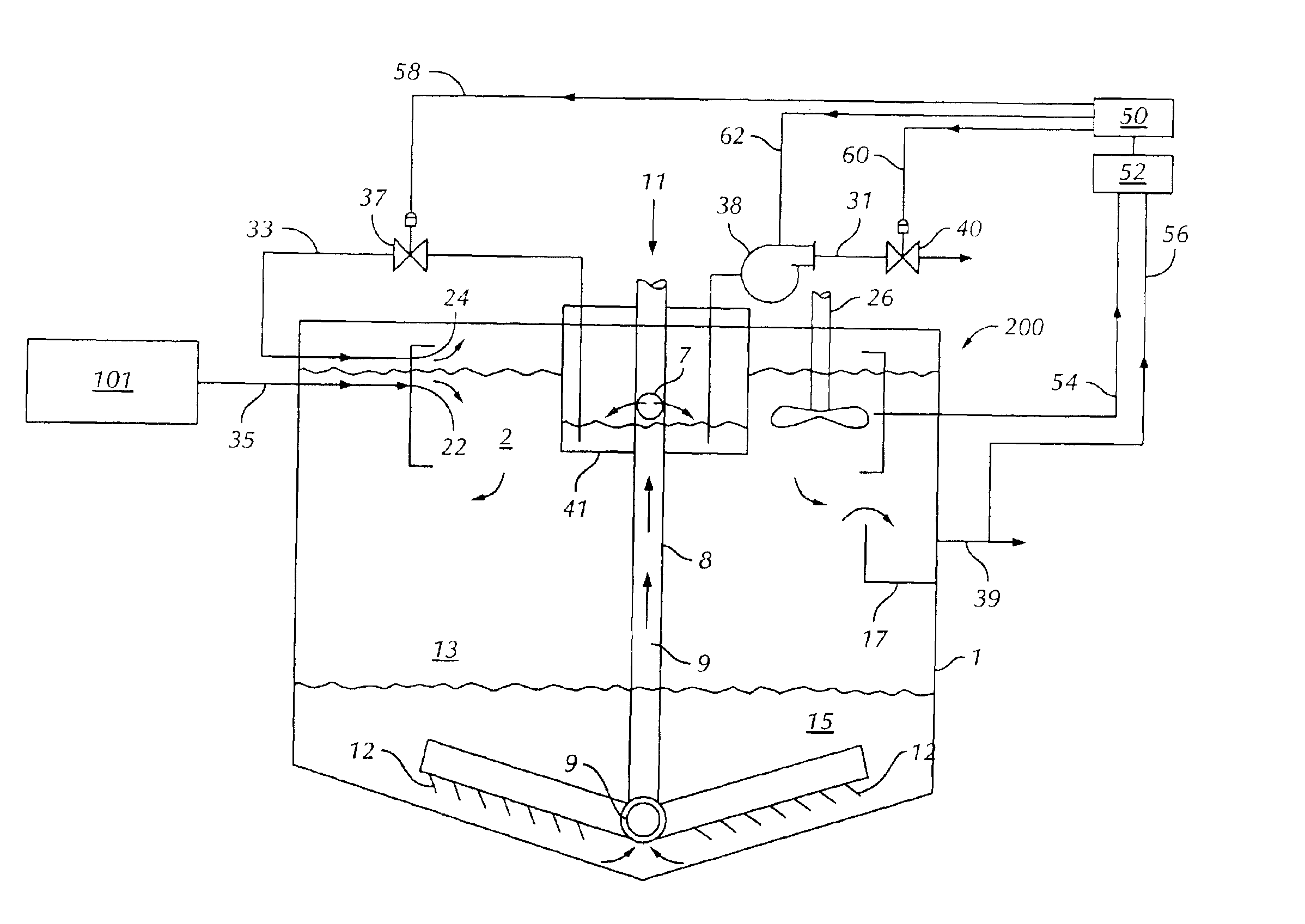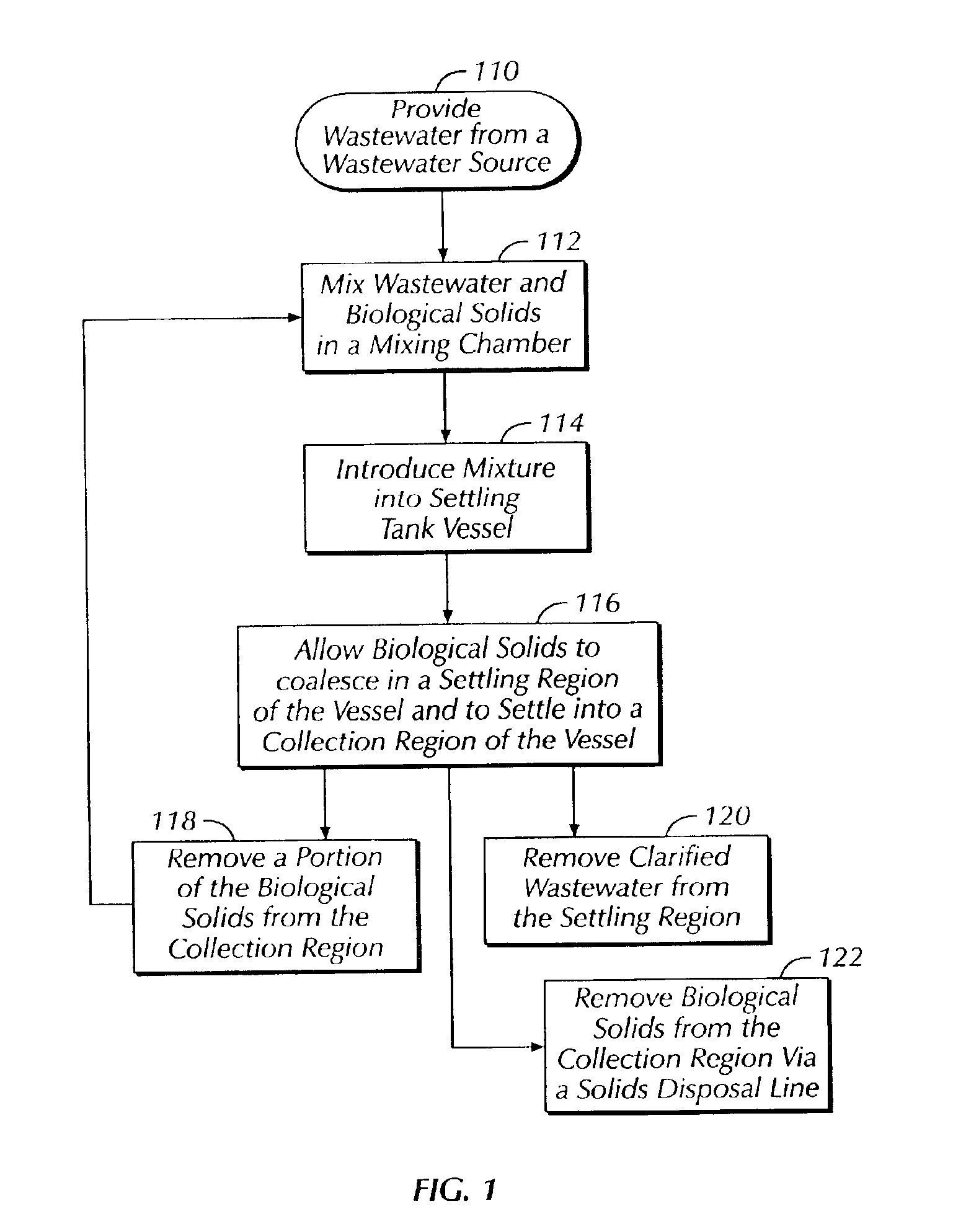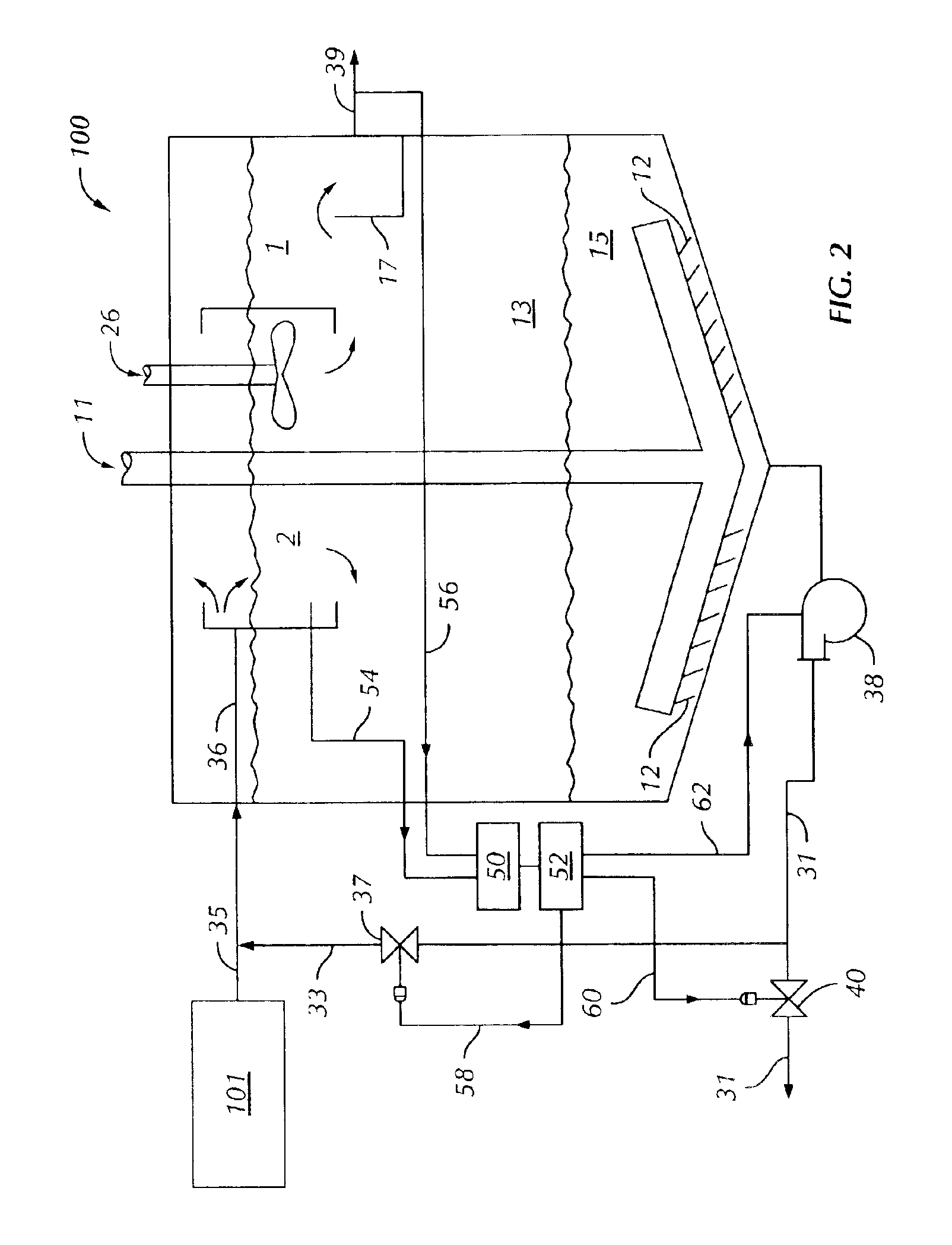Wastewater clarification methods and apparatus
a technology of wastewater and equipment, applied in the field of wastewater treatment, can solve the problems of biological solids not being recycled from the output stream of fixed-film digesters, sludge collection, and discharge of these materials into the environment with wastewater
- Summary
- Abstract
- Description
- Claims
- Application Information
AI Technical Summary
Benefits of technology
Problems solved by technology
Method used
Image
Examples
first embodiment
Improved wastewater clarifiers can be designed as described herein. Referring to FIG. 2, a wastewater clarifier 100 capable of being used in conjunction with the method of FIG. 1 is illustrated. The wastewater clarifier 100 comprises a vessel 1 and a mixing chamber 2. The mixing chamber 2 is in fluid communication with the vessel 1, and may be disposed within the vessel 1, maintained outside the vessel 1, or some combination of these two. The vessel 1 includes a settling region 13 and a biological solids collection region 15. A rotating rake assembly 11 extends into the collection region 15. Biological solids are removed from the vessel 1 by way of either or both of a solids disposal conduit 31 and a recycle conduit 33. Flow through the recycle conduit 33 is regulated in order to maintain an appropriate mixture with wastewater supplied from a wastewater source 101 by way of a wastewater conduit 35. Flow through the solids disposal conduit 31 is also regulated. Flow regulation in the...
second embodiment
An alternative embodiment of the clarifier is shown in FIG. 3. In this second embodiment, a wastewater clarifier 200 has a sludge well 41 preferably disposed at least partially within the vessel 1, also preferably positioned concentrically within the vessel 1 and the mixing chamber 2. The rake 11 comprises a shaft 8 that comprises a hollow portion 9. A sludge well 41 sealingly surrounds a portion of the shaft 8 and extends above the liquid level in the vessel 1, thereby substantially isolating liquid in the sludge well 41 from liquid in other portions of the vessel 1. The hollow portion 9 of the rake shaft 8 has an orifice 7 in its wall within the sludge well 41, so that the interior of the sludge well 41 is in fluid communication with the interior of the hollow portion 9. The hollow portion 9 extends near the floor or bottom of the vessel 1 and facilitates liquid flow between the lower portion of the vessel 1 and the sludge well 41. A solids disposal conduit 31, shown having an in-...
PUM
| Property | Measurement | Unit |
|---|---|---|
| Weight | aaaaa | aaaaa |
| Weight | aaaaa | aaaaa |
| Mass | aaaaa | aaaaa |
Abstract
Description
Claims
Application Information
 Login to View More
Login to View More - R&D
- Intellectual Property
- Life Sciences
- Materials
- Tech Scout
- Unparalleled Data Quality
- Higher Quality Content
- 60% Fewer Hallucinations
Browse by: Latest US Patents, China's latest patents, Technical Efficacy Thesaurus, Application Domain, Technology Topic, Popular Technical Reports.
© 2025 PatSnap. All rights reserved.Legal|Privacy policy|Modern Slavery Act Transparency Statement|Sitemap|About US| Contact US: help@patsnap.com



